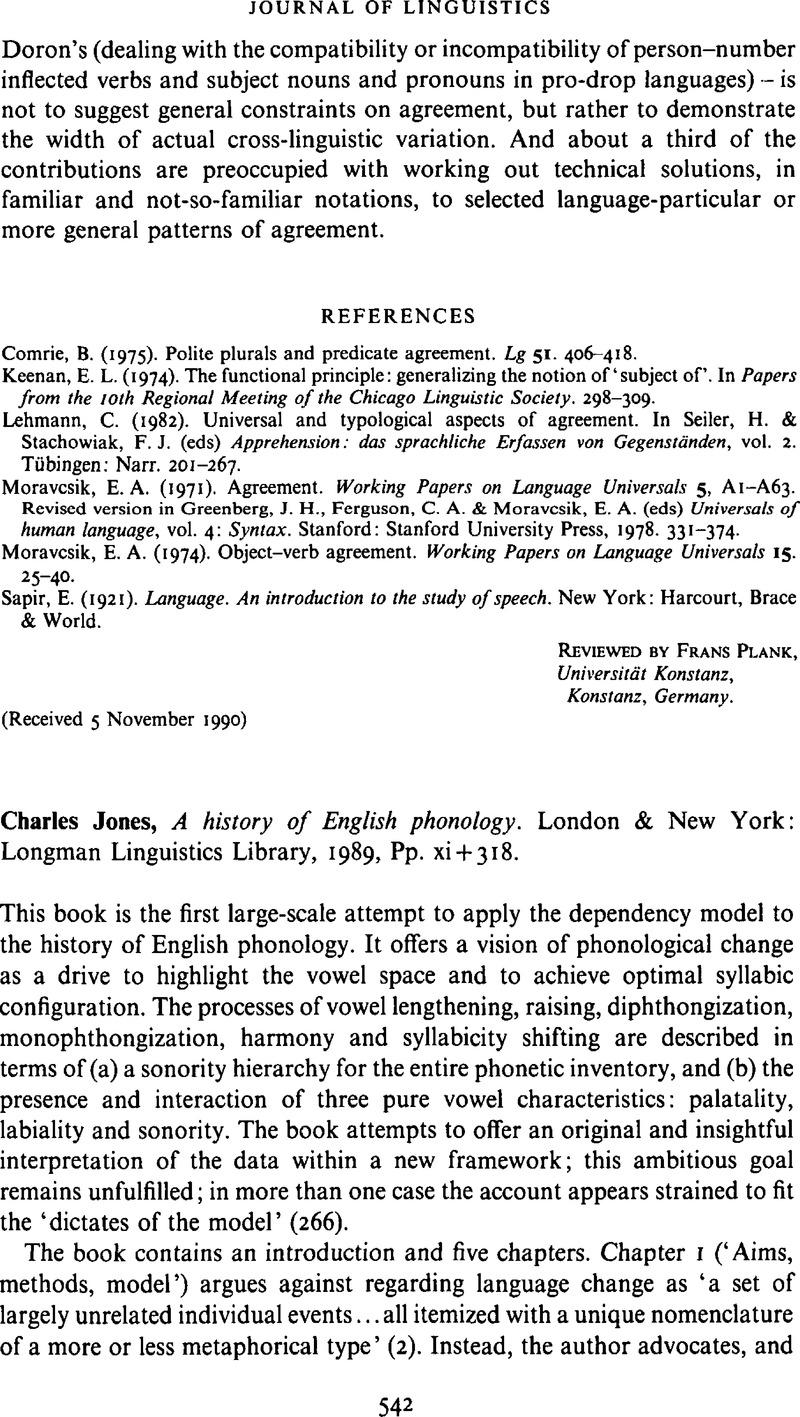No CrossRef data available.
Article contents
Charles Jones, A history of English phonology. London & New York: Longman Linguistics Library, 1989, Pp. xi + 318.
Published online by Cambridge University Press: 28 November 2008
Abstract
An abstract is not available for this content so a preview has been provided. Please use the Get access link above for information on how to access this content.

- Type
- Reviews
- Information
- Copyright
- Copyright © Cambridge University Press 1991
References
REFERENCES
Anderson, J. (1986). Suprasegmental dependencies. In Durand, J. (ed.) Dependency and nonlinear phonology. London: Croom Helm. 55–135.Google Scholar
Anderson, J. & Durand, J. (1986). Dependency phonology. In Durand, J. (ed.) Dependency and non-linear phonology. London: Croom Helm. 1–54.Google Scholar
Bliss, A. J. (1952–1953). Vowel quantity in Middle English borrowings from Anglo-Norman. In Lass, R.. (ed.), (1969) Approaches to English historical linguistics. New York: Holt, Rinehart & Winston. 164–207.Google Scholar
Luick, K. (1964). Historische Grammatik der englischen Sprache. Stuttgart: Bernhard Tauchnitz.Google Scholar
Minkova, D. (1982). The environment for Open Syllable Lengthening in Middle English. Folia Linguistica Historica 3(1). 29–58.Google Scholar
Minkova, D. & Stockwell, R. P. (forthcoming). Homorganic clusters as moric busters in the history of English: the case of -ld, -nd, -mb. In Rissanen, M. et al. (eds) Papers from the sixth international conference on English historical linguistics, Helsinki, May 1990.Berlin:Mouton de Gruyter.Google Scholar
Samuels, M. L. (1952). The study of Old English phonology. Transactions of the Philological Society 50. 15–47.Google Scholar
Stockwell, R. P. (1985). Assessment of alternative explanations of the Middle English phenomenon or high vowel lowering when lengthened in the open syllable. In Eaton, R., Fischer O., Koopman, W. & van der Leek, F. (eds) Papers from the fourth international conference on English historical linguistics.Amsterdam:John Benjamins. 303–319.Google Scholar
Stockwell, R. P. & Barritt, C. (1951). Some Old English graphemic-phonemic correspondences: æ, ea, e. Studies in Linguistics, Occasional Papers. 4.Google Scholar
Stockwell, R. & Minkova, D. (1988). The English vowel shift: problems of coherence and explanation. In Kastovsky, D. & Bauer, G. (eds) Luick revisited. Tübingen: Gunter Narr. 355–394.Google Scholar




